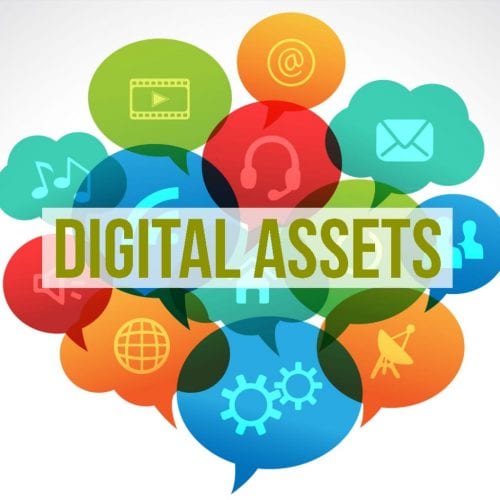
Possible Consequences for Commercial Tenants
July 30, 2018
Anti-Money Laundering Requirements
July 30, 2018‘Digital Assets’ – What Exactly Are They?

Welcome back to our tech blogs! Our last tech blog was on the digital estate planning of your crypto assets. Since then we’ve presented at a recent Wellington blockchain meetup where we chatted about more aspects of digital estate planning than just crypto. And that’s what we’ll be talking about in today’s blog; digital assets.
So much of our lives are spent online that we can’t help but leave an impressive digital footprint behind when we go. From social media accounts to utility accounts, email to eBooks, nearly everything is digital with many people owning up to 90 different online accounts. Not to mention that once the Internet of Things goes mainstream, what we have online right now won’t feel like much.
Digital assets are your property that exist in digital form, either online or digitally stored on a hardware device, including information used to access other digital assets.
Digital assets can be broadly sorted into these three categories:
a) business digital assets with monetary value;
b) personal digital assets with monetary value; and
c) personal digital assets with sentimental value.
Digital assets are so ingrained in our lives that we often don’t realise how much people around us rely on our being able to access them. For example, from a business continuity point of view, could your surviving business partners keep the company going if they don’t have access to your email accounts, document management systems, websites and customer management systems? Delays in accessing these types of things may result in significant loss of revenue.
On the home front, you may want to provide family members with access to baby photos, home videos, even your digital music and movie collection. Unfortunately, relatives and heirs may be unable to access your digital legacy if they don’t have the passwords or access rights.
Then there’s the opposite problem… for some of our digital estate, we may want to ensure family members don’t have access, and want to ensure that they can’t go looking through old facebook chats or private correspondence.
With all this in mind, what do you do and where do you start? The solution, as is so often the case, is to keep it simple. Put together a list of all your accounts and other digital assets, then address each one as to what should be done with it upon your death.
As you create a list of all your digital assets, you may find that many fall into more than one of the three broad categories above. What follows are some examples of what might be found in each of the categories:
Business digital assets include any digital property owned by a business organisation. A business may have registered online accounts. It might manage an online store or it might sell items through TradeMe or eBay etc. Stored mailing lists, newsletter subscription lists, or email lists will hold client information and history.
Personal digital assets with monetary value may include computing hardware, such as computers, external hard drives or flash drives. It can also include any personal digital assets that generate revenue for you, such as websites or blogs, domain names, video gaming accounts, art, music or other intellectual property. It can include accounts that are used to manage money such as your PayPal account, bank accounts, or even loyalty rewards programs.
Personal digital assets with sentimental value are much broader. The can include the above as well as your social media accounts, your family digital photo and video sharing accounts and your personal email accounts.
Once you have a comprehensive list of all your digital property, the next step is to provide instructions to your executor as to which assets you wish them to access and which should be deleted.
As with any secure information, do not list usernames or passwords in your will. Keep these separate in a secure location. Use a password manager (like LastPass) to keep yourself organised and leave instructions for your executor to find that information. Make sure the instructions are clear and appropriate for the level of technical knowledge your executor has.
If you’re the conscientious type who changes their passwords frequently, you’ll want to make sure you have a schedule for updating your instructions too. As technology changes your digital assets will change with it. Ask yourself this: right now, is your digital footprint the same as it was 10 years ago? Five years ago? Even one year ago? You don’t want to make a new will every year or pay your lawyer to update it every time you change your password, which is another reason why these instructions should be kept separate from your will.
If you have any questions or would like so more information on ‘Digital Estate Planning’; get in touch with our tech experts today so we can help you make the complex simple. Call us on 04 970 3600 or email info@wakefieldslaw.com



